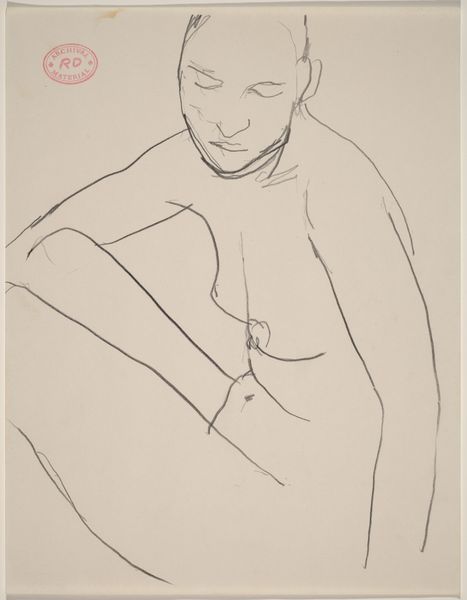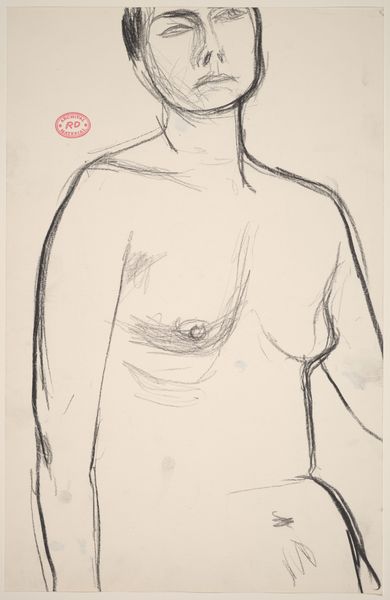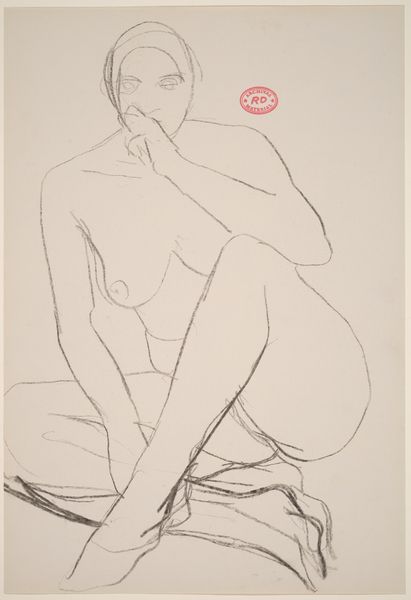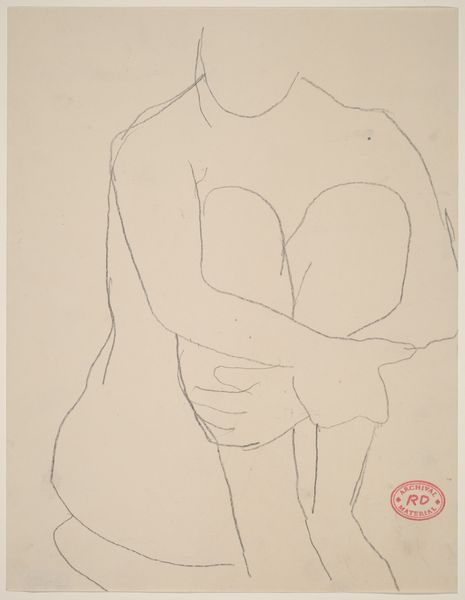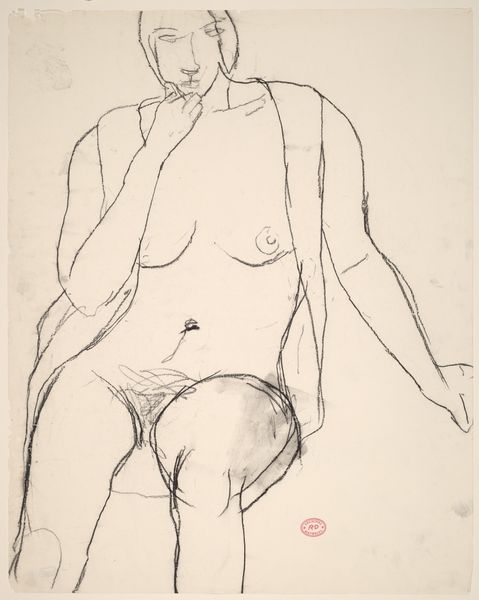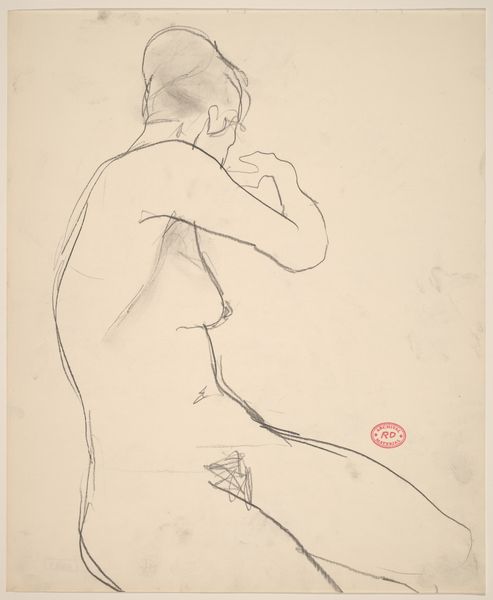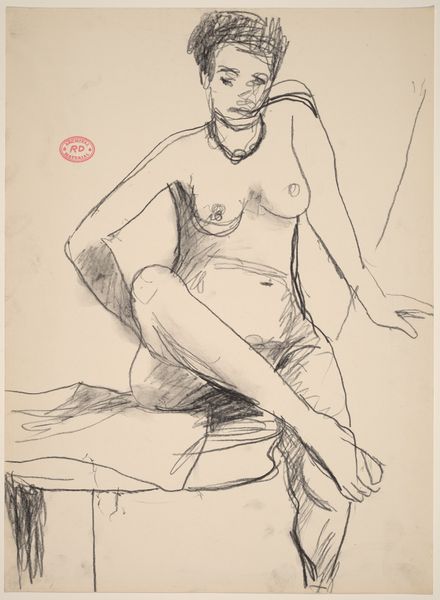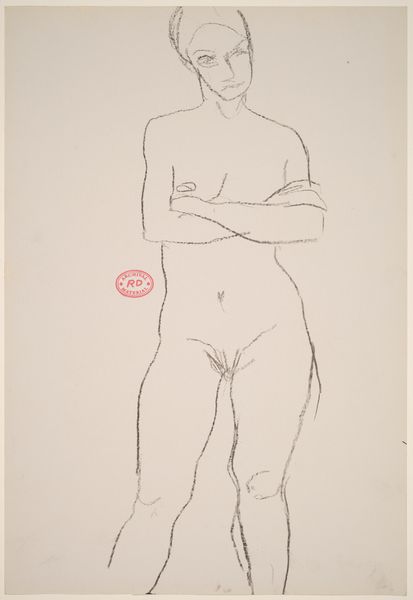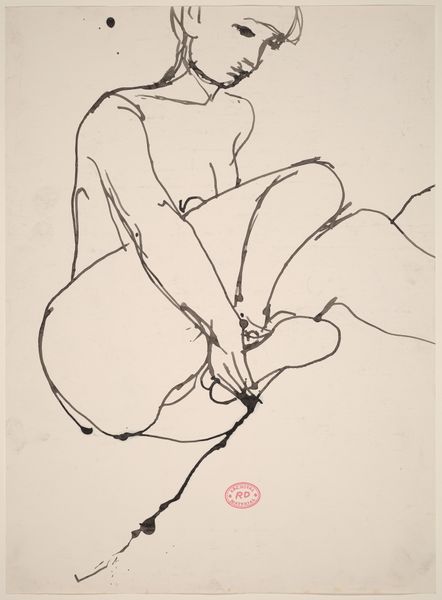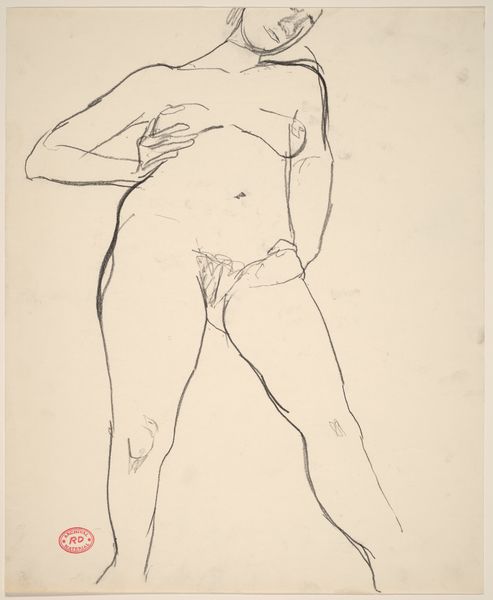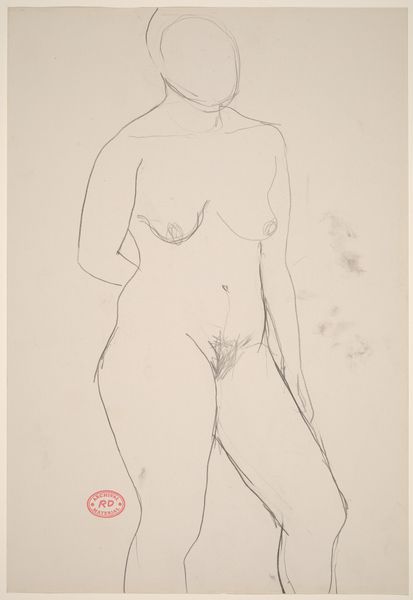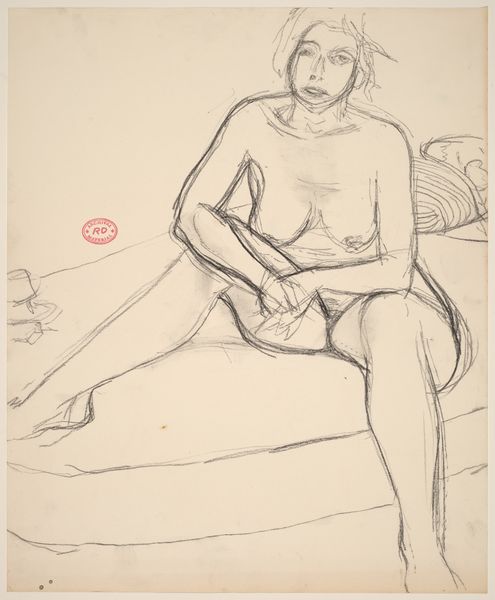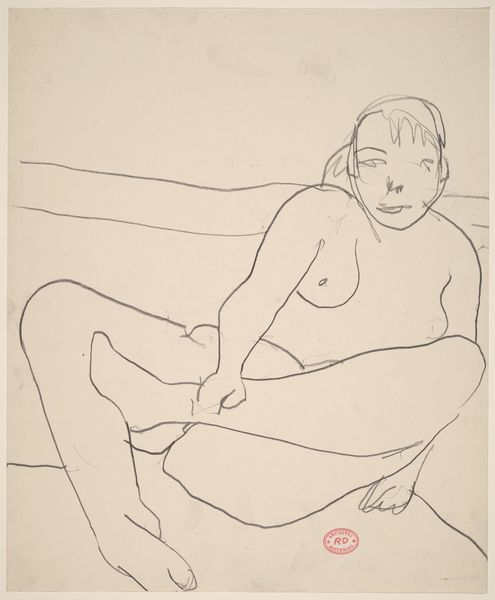![Untitled [woman with short hair on a sofa] by Richard Diebenkorn](/_next/image?url=https%3A%2F%2Fd2w8kbdekdi1gv.cloudfront.net%2FeyJidWNrZXQiOiAiYXJ0ZXJhLWltYWdlcy1idWNrZXQiLCAia2V5IjogImFydHdvcmtzL2I3NTkxNmMwLWI1M2UtNDU2Ni05ODBjLTExNWNlYzM4NTY5Mi9iNzU5MTZjMC1iNTNlLTQ1NjYtOTgwYy0xMTVjZWMzODU2OTJfZnVsbC5qcGciLCAiZWRpdHMiOiB7InJlc2l6ZSI6IHsid2lkdGgiOiAxOTIwLCAiaGVpZ2h0IjogMTkyMCwgImZpdCI6ICJpbnNpZGUifX19&w=3840&q=75)
drawing, pencil
#
portrait
#
drawing
#
figuration
#
bay-area-figurative-movement
#
pencil drawing
#
pencil
#
portrait drawing
Dimensions: overall: 43.2 x 27.9 cm (17 x 11 in.)
Copyright: National Gallery of Art: CC0 1.0
Curator: At first glance, this drawing feels incredibly vulnerable. There’s an unadorned simplicity in its execution. Editor: Absolutely. Let's take a look at this pencil drawing, "[Woman with short hair on a sofa]" created by Richard Diebenkorn sometime between 1955 and 1967. It presents a wonderful example of his draftsmanship and focus on form. What’s your take on the social context in the era it was created? Curator: Well, immediately it prompts questions about femininity and representation. She’s not posed for the male gaze; her downcast eyes feel deeply personal, self-possessed, which breaks with art historical conventions. Editor: Right, and look at the materials: graphite on paper. A humble combination really brings the attention to the skill in Diebenkorn's line work. It highlights process and access, democratizing the potential of art-making. No precious materials or overly laboured surface. Curator: True, there’s an immediacy. One gets the sense of witnessing a fleeting moment. The visible process – the lines left unfinished – is revealing. Do you think the lack of completion hinders or enhances the work? Editor: I think it's definitely an enhancement! It embraces a non-hierarchical treatment between what constitutes “finished” or “unfinished.” Considering how often women were portrayed as hyper-idealized figures in mid-century media, this piece quietly resists such artificial expectations. Curator: The looseness definitely echoes that of other pieces from the mid-century when a raw expressiveness, that exposed art-making, was valued. How would you situate this piece in conversation with women's access to leisurely time during that era? Was the subject relaxing something unique or part of everyday life? Editor: Good point. While it evokes leisure, the woman’s slightly tense posture suggests a more complicated reality. It prompts reflection on societal roles, perhaps the conflict between prescribed domesticity and inner aspirations. It gives us a wonderful glimpse into gender and personhood during that timeframe. Curator: I think I agree with you, but more than this work revealing social anxieties, to me it suggests an attention to, even the enjoyment of, domestic scenes, made accessible because of a humbleness of tools. Editor: And for me, I think that this unpretentious pencil drawing subtly complicates conventional narratives, quietly encouraging dialogues about what representation looks like from diverse standpoints, something Diebenkorn seems to anticipate, decades ahead.
Comments
No comments
Be the first to comment and join the conversation on the ultimate creative platform.
